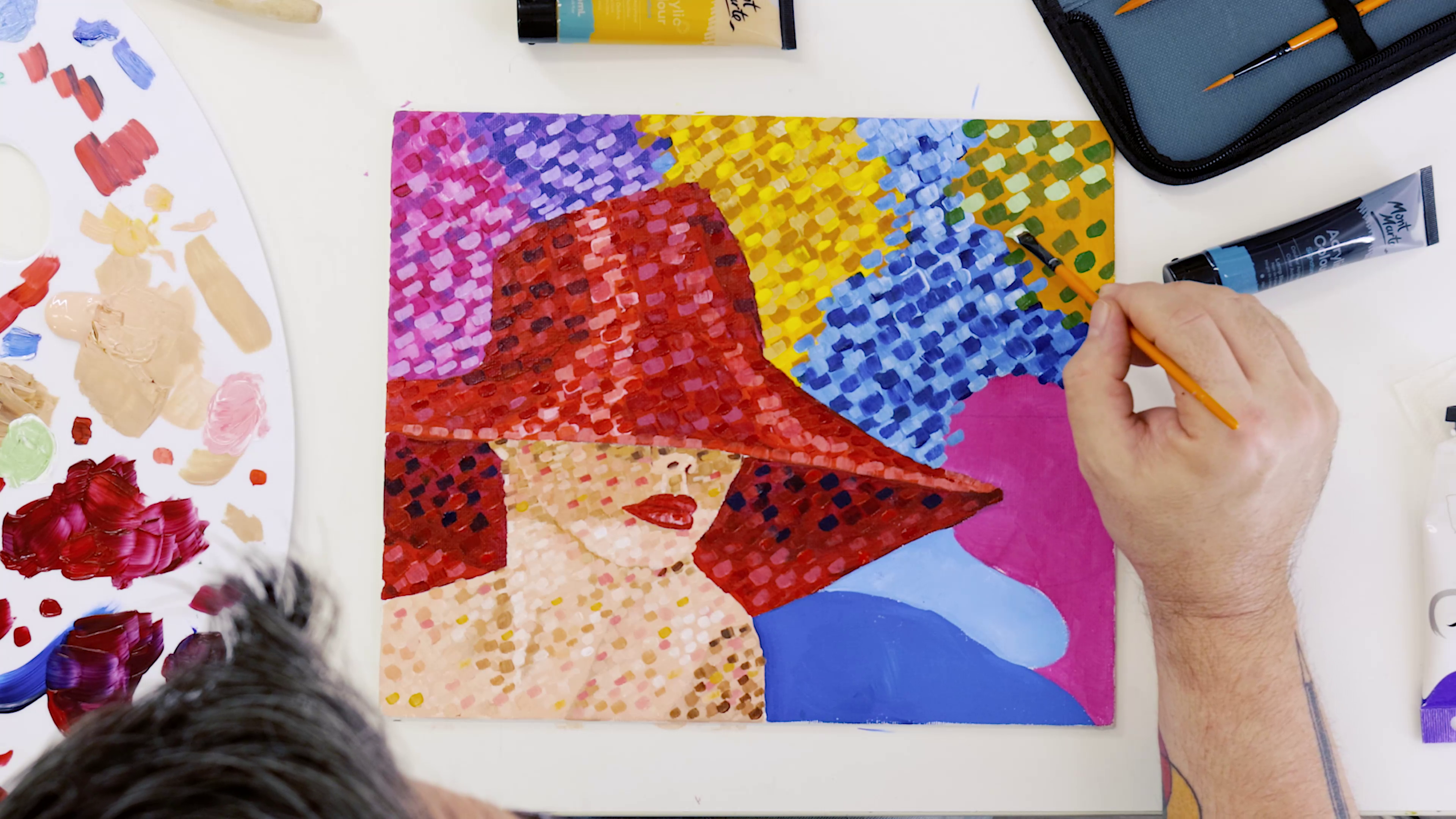Pointillism can be a fun, new way to create an artwork. In these Pointillism techniques, we’re showing you everything you need to know from brushwork to the Seurat technique of stippling, so you can join the dots and try it yourself!
Pointillism as an art movement was founded by artists Georges Seurat and Paul Signac. This form of neo-impressionism, was based around the idea that coloured dots, depending on their space to one another can be seen by the eye to blend together. Like pixels on a TV or computer screen, up close the artworks were full of coloured dots so when the viewer saw the painting in a gallery, the eye would view the dots as a completed artwork. So, with that sorted, let’s get into it with our top pointillism techniques.
1. Planning
There’s no denying that Pointillism is time consuming. Georges Seurat’s famous artwork, A Sunday Afternoon on the Island of La Grande Jatte took over two years to complete. So before starting, it’s a good idea to plan out your work. In pencil on canvas or paper, plot your subjects and add in any lines for perspective before starting out. This will also help contain the dots, so you’ll have what looks like sharper lines when you step away.
2. Underpainting
Because pointillism is all about using the eye, underpainting is a good pointillism technique for filling in large areas of colour first. Underpainting isn’t cheating, in fact Seurat used a range of different brush strokes in his work and used underpainting for big areas like cornfields or to give a large area like grass, the suggestion that light reflected off it. To underpaint, add in a lighter tone of the area you’re looking to cover and make sure the paint or wash is thin, light and transparent. If you use a solid block of colour, then the dots placed on top can lose their effectiveness. Both acrylic and watercolour washes are great for underpainting. If you’re using oil paints, try acrylic for a quicker first coat.
3. Stippling
The Seurat technique in Pointillism uses stippling where dots are created either close together or far apart. This can be created with markers or with the back of a paint brush for painting. To stipple, place lighter areas with fewer dots. For darker areas, place the dots closer together and denser. Stepping back, the dots will look like coloured areas and your eyes will see the dots as colour. For markers, try a bullet or dot marker, this will make things much easier. For painting, you can use a cotton bud tip, the back of a brush or the end of a pencil. If your work is detailed, it’s best to work with smaller dots than bigger dots so the eye can optically blend them, a bit like a TV.
4. Optical blending
When we think of pixels, they’re only using primary colours: red, yellow, blue and of course black and white. These colours are placed together to become orange, green and purple and our eye optically blends the colours from afar. For this pointillism technique, place red and blue dots together to create purple, yellow and blue for green, and red and yellow for orange. Build up areas of blue with lots of dots and then add in white dots for highlights. Keep stepping away from your work so you’ll see how the eye blends the colours.
5. Brush work
The more detailed the work, the smaller the size dots you’ll want. Plus depending on the tonal values in your artwork, will also determine if you reach for smaller, intricate dots for shadows or larger dots for lighter areas. Play around with various brush ends, pencils or round brushes and see what works for you. Seurat also used some small directional brush lines for textured areas and broken lines for perspective and light.
Now that you know a few techniques, hopefully, you want to explore creating some pointillism artwork. You don’t have to be an expert to have a go and experiment with some of these techniques.
If you feel inspired to create or try anything listed in this blog, #montmarteart or tag us @montmarteart on Instagram or Facebook because we’d love to see what you come up with!
If you liked learning techniques, you might want to check out 10 tips for dotted painting to explore a similar kind of creating! If you need supplies, jump in-store or online to check out our paints and brushes.




































